Day 54 Seeing Japan with a Musician in Matsuyama
Clearly the woman above is not the musician I’m talking about. Hikaru Miyoshi, the shamisen player that I met in the ferry from Okinawa lives in Matsuyama in Ehime Prefecture. Ehime is in Shikoku Island, the fourth biggest island in Japan. Shikoku Island has four prefectures (Ehime, Kagawa, Kochi, Tokushima). Shikoku literally means “four countries,” and Matsuyama City is the capital of Ehime Prefecture.
Hikaru-san invited me and Nate to his family home in Matsuyama. Who would have thought that the musician in kimono who looked like someone from another era and a cyclist in a dumping wet rain gear in Okinawa were going to meet again in Shikoku. I wrote about this a bit in my previous post, but we both looked odd and different at the ferry port, we started talking and became friends.
Hikaru-san is a shamisen player (three string instrument), but he also plays the biwa, Japanese lute, which is a very rare instrument that you don’t see being played very often. I was excited to see it for the first time in real life, let alone playing it. This is what it sounds like when it’s played by him:
Matsuyama City has a famous onsen (hot spring bath) called, Dougo Onsen. This beautiful bath house is also known for its appearance in the novel called, Botchan, by Natsume Soseki, the Japanese writer whose face is on the 1000 yen bill. As it was during the busy holiday season, the bath house was crowded, but it was a bath I had to take in my visit to Matsuyama.
Hikaru-san used a tetsubin, this heavy Japanese iron kettle, to boil water to make coffee for us. He said the water tasted much better with it. I’ve used it in Japanese tea ceremonies, but this was the first time coming across someone using it for his daily use. I’ve read that the more it was used, the better the water tasted. This heavy kettle also keeps the water temperature longer as well.
His family’s house had all kinds of traditional Japanese items. I noticed they had Japanese candles, and when I pointed that out, he kindly lit this expensive candle to show us the difference between that and the modern paraffin candle. Wa-rousoku, Japanese traditional candles, are hand made by handful of craftsmen with laquer tree seed, and they produce brighter light, less smoke, and burn slower than the modern candles.
After a little bit of musical morning, it was time for the locals’ lunch. We went to a small hide-out place to have nabeyaki udon. The hot udon noodles came out very quickly in a pot. It was simple, and the dashi (the stock from fish) was very good. The simpler the dish, the better the ingredients have to be. Japanese food is generally very mild in flavor, in order for you to be able to taste the ingredients themselves. This requires freshness, as it cannot be masked by strong flavoring and spices.
This is completely trivial, but Hikaru-san had a yellow wallet. Yellow wallets in Japan are said to bring in money and make you rich. The opposite are red wallets. (I’ve had a very pretty red wallet before… I’m not superstitious!)
As we headed to Matsuyama Castle, we saw all kinds of fun things in the shops nearby. Here is a bad-ass decorative roof tile called, Onigawara. Onigawara is for protecting the house from evil spirits. I don’t think any evil spirit would want to come into the house with a cigar-smoking roof staring at you.
Ehime Prefecture is known for producing lots of mikan (tangerines). I tasted a little bit of mikan sake on the way to the castle. Oh yeah, I like visiting castles even more now.
Here we are at Matsuyama Castle!
Remember I went rock climbing in Okinawa with a pro? Well, I had to test my skills.
“Shoot that intruder!”
I’m sure that’s what the samurai lord in this armor with mustache would have said.
Lately I’ve met an American guy who was keen on Japanese carpentry. I thought I’d share this display I saw inside the castle. It is the art of joinery. “With the limitations of length and width of wood, carpenters developed the art of joinery, fashioning pieces of wood to fit together snugly like a puzzle to make them longer and stronger.” Indeed, the last photograph especially, looks like a difficult 3D puzzle. Japanese castles, temples, and some houses are built with this wood technique. (Below is a Flash slideshow)
Ume, Japanese apricots, were growing by the castle. Their pink, white, and yellow blossoms are beautiful in February, a bit before the cherry blossom season.
Shikoku Island is known for the 88 temple pilgrimage called, Shikoku Henro. Many people to this day walk this long route to visit 88 Buddhist temples in white outfit. (On this google map, you can see all 88 temple’s location.) Some people cycle, drive, or take a bus, but the most traditional way is by walking, which would take over a month to complete even if you walked 30km a day. As I cycled in Shikoku Island, I saw many walking pilgrims from young to old, which made me feel rather lazy to be on a bicycle.
I visited one of those temples, Ishite Temple, which was #51, in Matsuyama.
There are different stories behind the beginning of this pilgrimage, but the famous one is of a guy called, Saburou Emon:
One day a poor-looking monk knocked on Saburou’s door, asking for offering of rice. The rich and arrogant Saburou had no compassion and rejected this monk time after time, and finally literally brushed him off with a bloom, and the monk fell and his bowl broke into eight pieces. The monk never returned.
After that incident, one of eight children of Saburou’s died every year, and they were all gone after eight years. Following these horrible years, Saburou dreamed of Koubou Daishi, the famous monk who made the 88 temples in Shikoku. Saburou finally realized that it was this monk whom he had treated terribly.
Saburou decided to walk to each temple to meet this monk again to apologize for his attitude and wrongdoing. After walking over 20 times around, he even went the opposite direction to find the monk. When he got sick and was nearly dying, Koubou Daishi appeared and Saburou cried and apologized. The monk asked Saburou if he had any wish, and he replied he wanted to reincarnate in Kawano Family. The monk wrote “Saburou Emon returns” on a stone and had Saburou hold it in his hand as he died.
The next year a boy was born to Kawano Family with a very tightly closed hand. After it was treated and opened, a stone was revealed with that writing on it.
The stone (rather huge) can be seen at Ishite Temple today. Ishi means stone, and te means hand. This Ishite temple was renamed after this story. Below is a statue of Saburou Emon at the temple.
Hikaru-san told me the story with Ishite temple’s yaki mochi. Though it is hard to read, it says 51 on the mochi.
After that, we visited a cafe called Waku Waku, where these lovely ladies of an NGO called Ehime Global Network were hard at work. Their organization collects unused bicycles in Japan and send them to Mozambique, where these bicycles are truly prized. Even president of Mozambique has visited this cafe because of their hard work, which was a first for Ehime Prefecture to have a president of any country. They also sell South Timor’s fair trade coffee, which is what we had at the cafe. It says “Eco & Piece” on this cup. ![]()
The dinner at Hikaru-san’s parents’ house was something I’d never had in my life; wild boar barbecue! Surprisingly it wasn’t gamey at all. It was a feast of lots of home grown vegetables too.
Hikaru-san’s mom’s kinpira gobou. Gobou is burdock root, often eaten in Japanese cuisine. This flavoring is sweet and savory, and she topped it with black sesame seed.
Tempura of taranome (fatisia sprouts) that mom had picked that day. Mmm, crispy!
Mom’s onigiri = love.
What a day with so many traditional, cultural, and historical things we enjoyed! The family evening after the meal was filled with laughter and live music as Hikaru-san played his shamisen.
This was the very first time for me to visit Shikoku Island. I believe I had the best introduction to this place by this welcoming musician and his kind family. Shikoku is full of mountains, beautiful nature, and the kind locals who welcome many pilgrims from all over Japan and abroad. Though I wasn’t a pilgrim, I was treated with such kindness and generosity by a family of Shikoku.
One Response to Day 54 Seeing Japan with a Musician in Matsuyama
Comments! Yay!
« Day 52-53 Taste of Peace in Hiroshima Day 55 A Surprise Foodie Trip to Kochi »

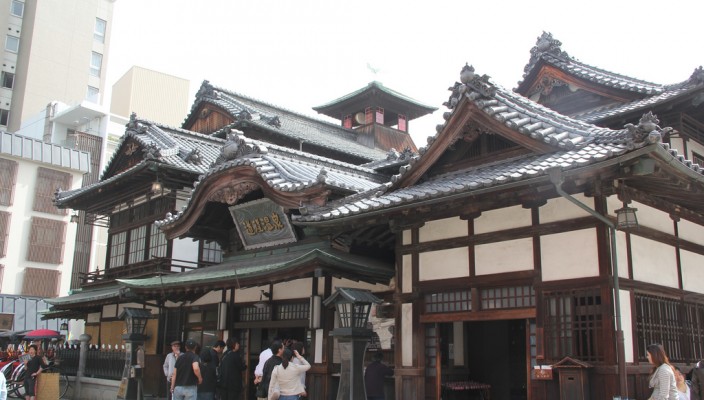

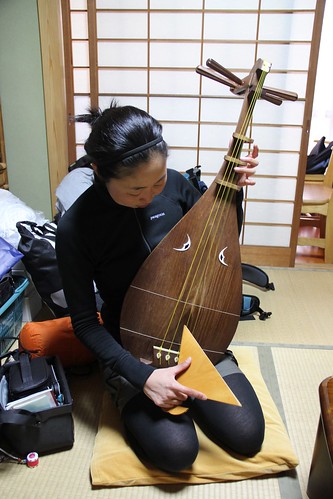
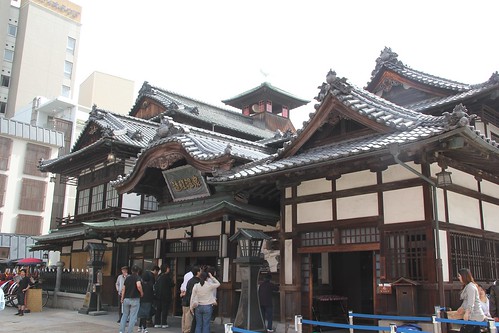
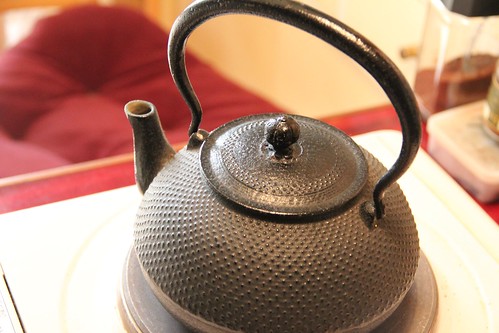
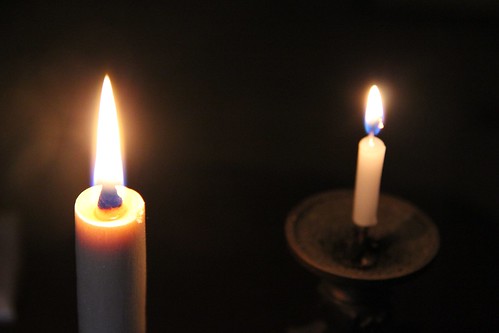

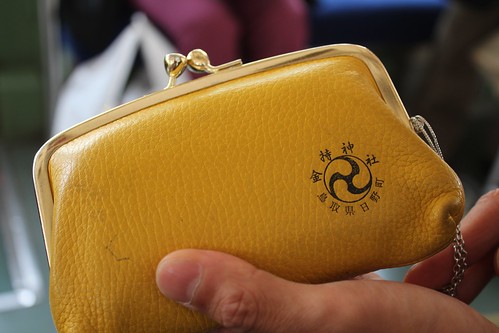
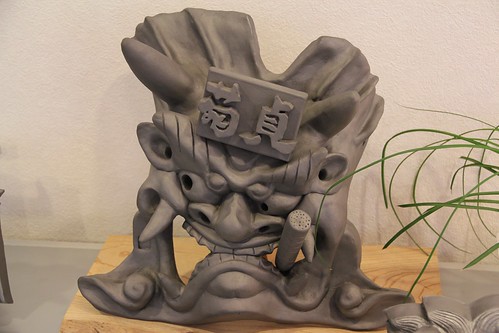
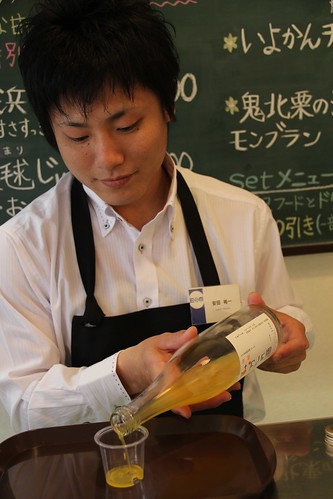

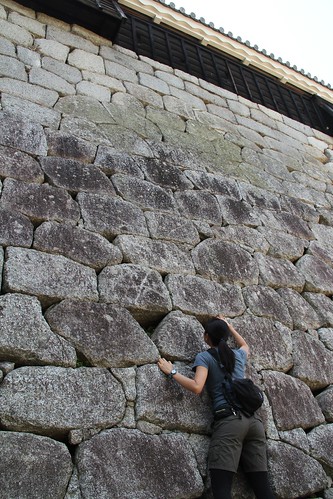

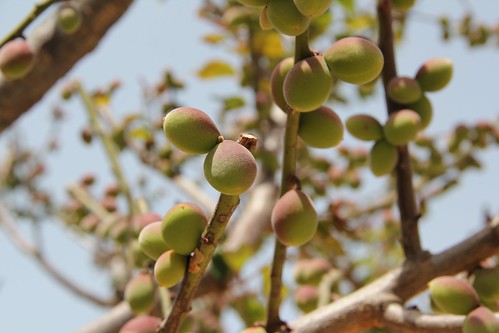
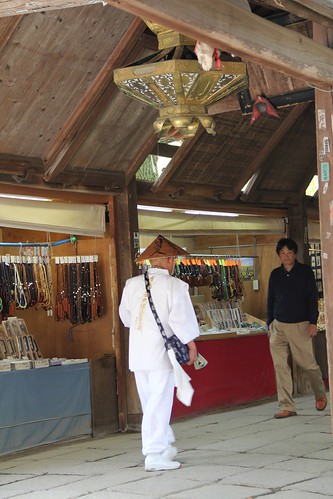

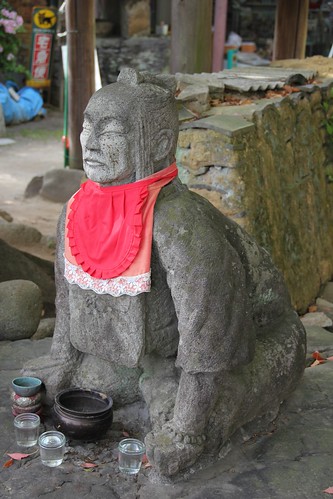

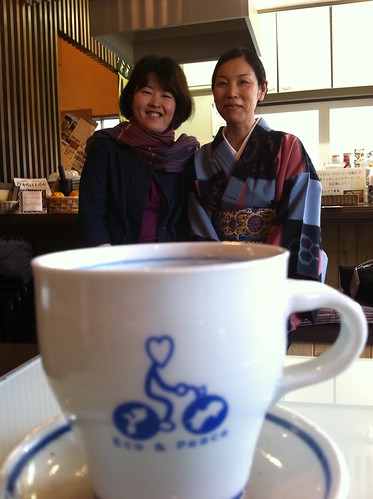
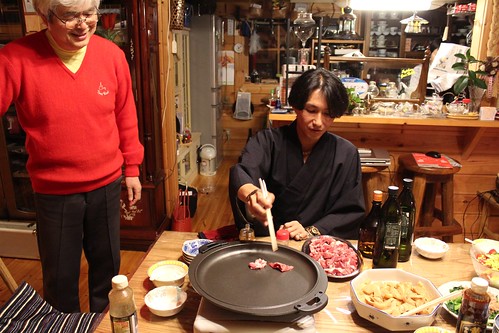
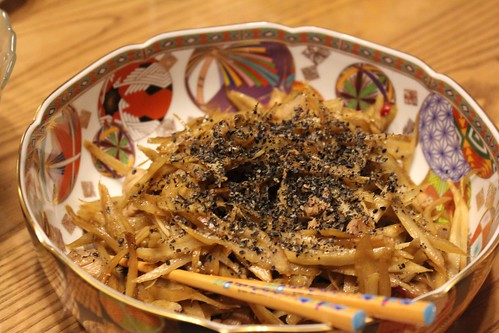

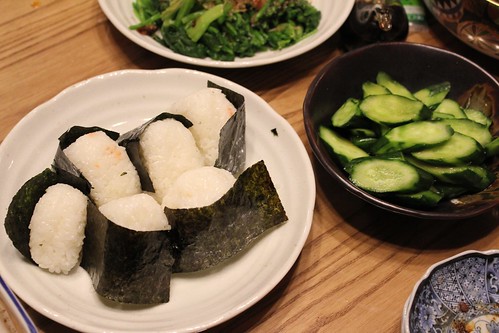
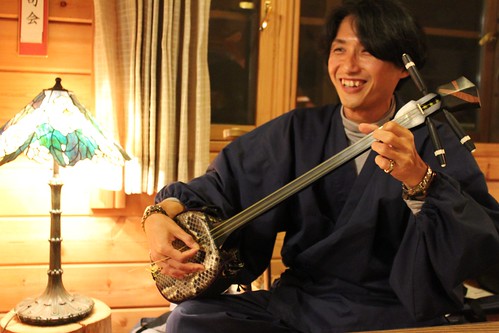
















[...] detail of these old buildings is an art of skilled workmanship. Remember the cigar-chomping onigawara in Matsuyama? Here are some (…without cigars) in the works on top of a [...]